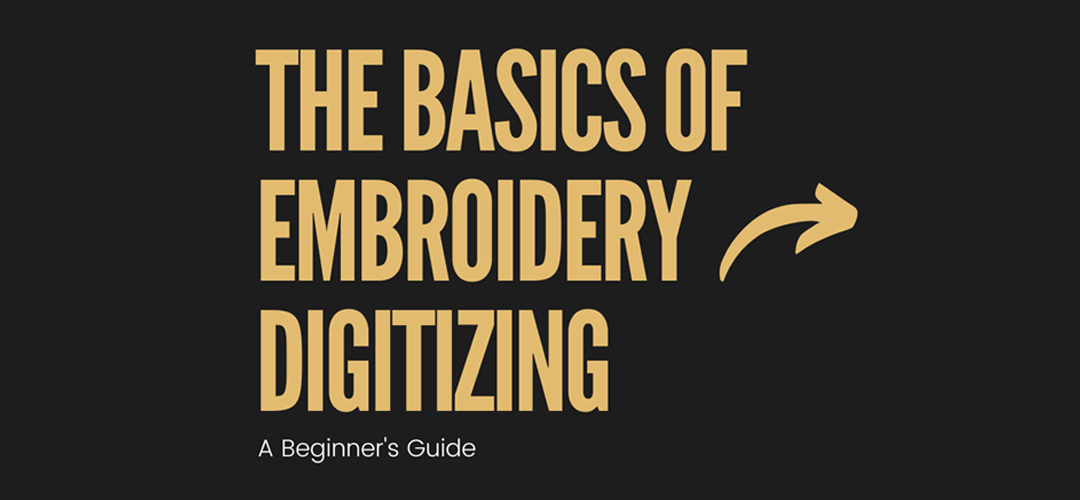Posted At: Apr 27, 2023 - 8,695 Views

Embroidery digitizing is the process of converting a design or image into a digital embroidery file format. This file can then be used to embroider the design onto various materials such as clothing, hats, and bags. Embroidery digitizing has become increasingly popular over the years, and it is now an essential aspect of the embroidery industry. In this article, we will explore the basics of embroidery digitizing, including the tools and techniques used, and how it can benefit both individuals and businesses.
The Tools of Embroidery Digitizing
To digitize embroidery designs, you will need specific tools and software. Some of the most commonly used software for embroidery digitizing include Wilcom, Embird, and Pulse. These software programs are designed to create and edit embroidery designs with precision and accuracy. They offer a range of features and tools that allow users to create and edit designs, choose thread colors, and test stitch counts.
Apart from the software, you will also need an embroidery machine to stitch the design onto your chosen fabric. Embroidery machines come in various sizes and capabilities, so it is essential to choose one that is compatible with your software and design needs.
Finally, you will need a computer and a stable internet connection to download and upload designs, as well as communicate with clients if you are working as a freelancer.
The Techniques of Embroidery Digitizing
The process of embroidery digitizing involves various techniques that help create high-quality designs. Here are the basic techniques that you need to master:
- Vectorization: This technique involves converting a raster image, such as a JPG or PNG, into a vector image. Vector images are essential for embroidery digitizing as they allow the software to create clean and precise lines that can be easily converted into stitches.
- Pathing: This technique involves creating a path or outlines for the embroidery design. Pathing is essential as it allows the software to create a sequence of stitches that follow the outline of the design. Proper pathing helps to minimize thread breaks and ensure that the embroidery machine stitches the design accurately.
- Stitch Types: There are several types of stitches used in embroidery digitizing, including satin stitches, fill stitches, and applique stitches. Each stitch type serves a specific purpose, and they are used to create different textures and effects in the design.
- Density: Density refers to the number of stitches per inch in an embroidery design. The density can affect the quality of the embroidery, and it is important to ensure that the design has the correct density for the fabric and thread being used.
- Underlay: Underlay refers to the stitches that are added to the design before the top layer of stitches is added. Underlay helps to stabilize the fabric and provide a foundation for the top layer of stitches. The type of underlay used depends on the fabric being embroidered and the stitch density.
The Benefits of Embroidery Digitizing
Embroidery digitizing offers a range of benefits for both individuals and businesses. Here are some of the main advantages:
- Customization: Embroidery digitizing allows for a high level of customization, as designs can be created to suit individual needs and preferences. This is particularly useful for businesses that want to create custom-branded merchandise or uniforms.
- Consistency: Embroidery digitizing ensures consistency in the design and stitching, which is essential for businesses that want to maintain a professional image.
- Time-Saving: Digitizing designs can save time as the process is automated, and the embroidery machine can quickly stitch the design onto the fabric.
- Cost-Effective: Embroidery digitizing can be cost-effective in the long run, as businesses can create multiple copies of the same design without having to pay for manual labor each time.
Tips for Success in Embroidery Digitizing
Embroidery digitizing can be a challenging process, especially for beginners. Here are some tips to help you succeed:
- Choose the right software: There are many different types of embroidery digitizing software available, each with its own strengths and weaknesses. Do your research and choose a software that meets your needs and skill level.
- Start with simple designs: When you are first starting out, it is best to start with simple designs. This will allow you to focus on the basics of embroidery digitizing and build your skills before moving on to more complex designs.
- Practice, practice, practice: Embroidery digitizing takes practice to master. Set aside time each day to practice and experiment with different techniques and designs.
- Pay attention to detail: Embroidery digitizing requires attention.
Conclusion: Embroidery digitizing is a fascinating art form that requires patience, practice, and skill. By investing in the necessary tools, software, and equipment, and by following the basic steps involved in the digitizing process, you can create beautiful designs that will impress your clients or loved ones. Remember, embroidery digitizing takes time and effort to master, so don't get discouraged if your first designs don't turn out perfectly. With practice and dedication, you can become a skilled embroidery digitizer and create amazing designs that will be treasured for years to come.
Need Customized Design? Get Quote Now
